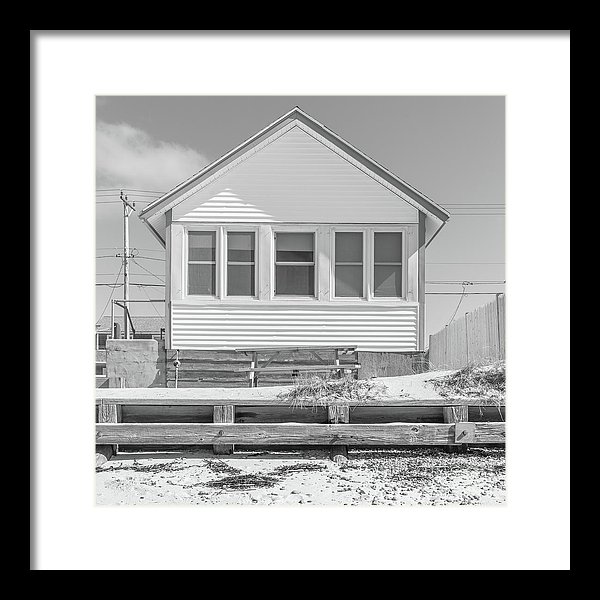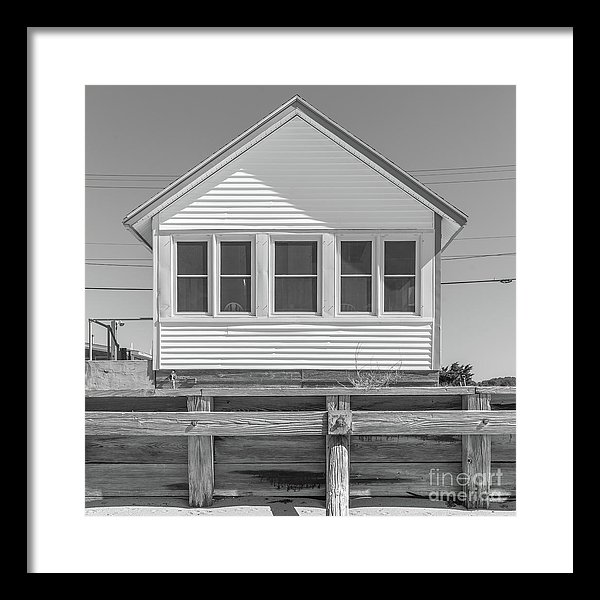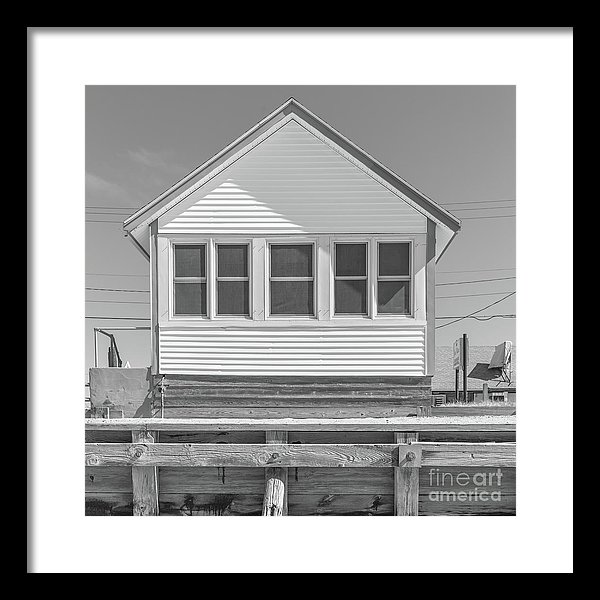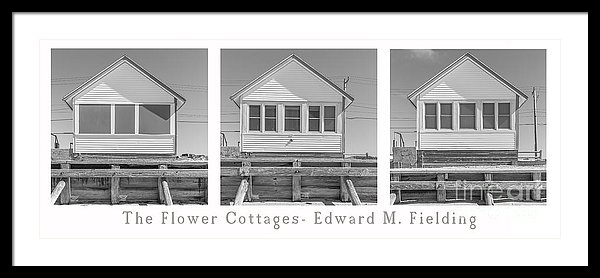Above: The Flower Cottages by Edward Fielding.
Fine art photographer Edward Fielding’s series of photographs of the “Flower Cottages” on Cape Cod are an example of straight photography.
Straight on, center composed, documentary style photographs which when viewed individually seem meaningless but when grouped or arranged, take on more meaning.
When viewed as a sequence in the form of a book or gallery show, the viewer begins to see the subtle differences between the seemingly identical vintage summer rental cottages.



The Flower Cottages series by Edward Fielding consists of twenty-two nearly identical cottages in all. Seen side by side the viewer is compelled to spot differences in window treatments, condition of the vinyl siding, changes in the background etc. The single image is enhanced by its presence within a grouping, just as each cottage has provided its own sets of memories among the summer renters as well as the shared memories of the group of vacations enjoying the summer at the beach.
The straight photograph is often thought of as uncomposed and artless, a ‘degree zero’ of composition, which in some senses it is.
If we understand composition as an orchestration of the picture and an orchestration of its viewing, then the straight image refuses to lead the eye, refuses to lead the reading of the image.
On the one hand this makes it a thoroughly generous, open and democratic kind of photograph, but it also makes it resistant and demanding.
Without visual punctuation, and despite the wealth of information on offer, the single straight image can appear quite inscrutable, as dumb as it is pensive.
It seems to announce a functional use but we don’t know what it is. (“You see,” said Walker Evans “a document has use, whereas art is really useless.”)
There it is: full and open, but somehow we are momentarily disarmed. The subject matter appears to us at the center of the image, as the center of attention, but also as a blocking of attention. The image compels but it is difficult to look at.
Our gaze is restless and we don’t know quite what to do. It is only when we see difference and repetition, comparison, contrast and dialogue between images that we can be relieved and stimulated. Such is the logic of the collection or sequence.
The isolated picture/artifact is given a depth of meaning through the structure and orchestration of the group. Art is largely effaced from the image but returns in the act of assembly.
by David Campany except from “ALMOST THE SAME THING”:
SOME THOUGHTS ON THE COLLECTOR-PHOTOGRAPHER.
